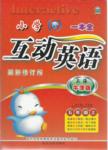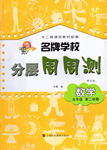题目内容
The damming of river systems in the northwestern United States has had damaging effects on salmon(鲑鱼). In the spring young salmon, called smolts, drift into rivers from smaller streams. They swim with the current downstream heading for the Pacific Ocean. Before the large-scale constructions of dams(水坝), the young salmon used the strong flow from melting snows to get to the sea in between six and twenty days. It is necessary to do this because during these days the smolts’ bodies undergo the physiological changes for adaptation to salt water.
Unfortunately, the current has become very slow due to the construction of numerous dams. Companies operating the dams also intentionally slow the current. They store the water from the melting snow until the winter, when more electric power is needed. The net result is that many of the young fish do not survive the now sixty-day trip to the sea. Consequently, there are fewer adult salmon to migrate(回游) back up the rivers for breeding. When the time comes for the salmon to return, they again face the problem of dams. As fewer adult salmon are able to get back to their cool upstream water, they fail to produce a sufficiently new generation of salmon. This cycle could eventually lead to the extinction of the fish.
Attempts are being made to transport the young salmon down river by boats. However, many scientists think that this artificial method of getting the fish to the sea kills more than it saves. Another suggestion, recently proposed by environmentalists, is to increase the rate of water flow. This would be a partial(部分的) solution to the declining salmon numbers. One method of doing this would call for releasing water from upstream dam. This would speed up the downstream movement of the smolts.
Another method would be to reduce the water level in the dams for a period in the spring when the smolts are migrating downstream. This would also increase the flow rate temporarily without requiring large amounts of water and, thus, enable the young salmon to move downstream faster. Unfortunately, both of these proposals have met with criticism from the power companies, which strongly suggests the uncertain fate of the salmon in the region.
76. What’s the main topic of the passage?
A. The failure of adult salmon to reproduce.
B. The importance of smolts returning upstream.
C. The need for smolts to reach salt water quickly.
D. The harm caused to salmon by river damming.
77. The passage discusses all of the following methods of dealing with salmon issue EXCEPT _____.
A. carrying the fish in boats
B. allowing water to be released from upstream dams
C. dropping water levels in dams
D. breeding salmon
78. In paragraph 3, what does the author mean by the statement that many scientists think that this artificial method of getting the fish to the sea kills more than it saves?
A. Saving fish is artificial.
B. More fish die when transported than would die otherwise
C. Artificial methods of transportation give salmon the chance to get adapted to salt water.
D. The sea kills more fish than are saved by transportation.
79. Which of the following statements would the author most probably agree with?
A. The salmon problem is likely to continue.
B. A solution to the salmon problem will be found in the near future.
C. Salmon will be extinct very quickly.
D. The government should step in and provide a way out.
76-79 D D B A
解析

 互动英语系列答案
互动英语系列答案 名牌学校分层周周测系列答案
名牌学校分层周周测系列答案